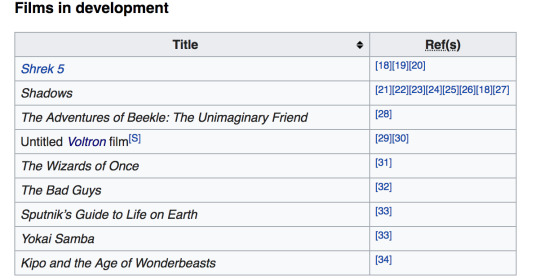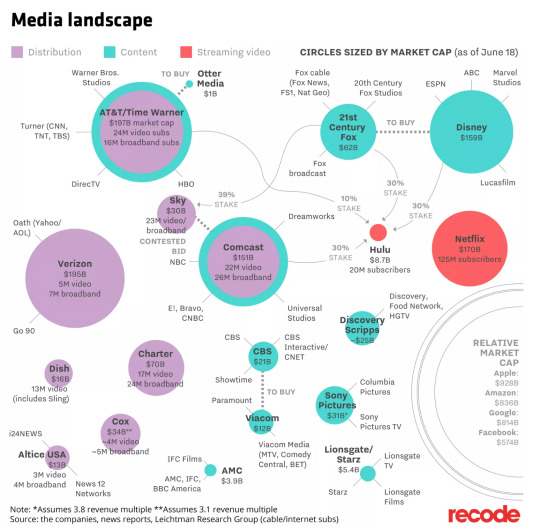#finally a good breakdown of genx
Text
season release & demographics
Alright, I’ve gotten several asks about the speed of the upcoming season releases for DW/Netflix. Most asks amount to roughly
are they releasing that fast because they want it over, or because more stuff is coming?
...with at least two asks attempting to make sideways snarky comments about the revelation of a canonically gay character.
Behind the cut: some stats on how DW groups and broadcasts its series, some data-based theories on VLD’s scheduling, who the ‘real’ audience demographic is, and some speculation about show timing independent of VLD itself.
how DW groups and broadcasts its series
First thing I should note is that dropping a chunk of episodes at once onto Netflix is relatively new for DW, compared to their years of traditional weekly syndicated format on Nick, CN, etc. (You can find a list of all past and present television productions here.) Starting around 2014, their Netflix/DW works were mostly the usual children’s fare -- episodic shows made for syndication.
Two shows changed this game: VLD and Trollhunters, both premiering in 2016. Each contain one continuous arc, requiring viewing in order, from the start. Unfortunately that means the only real comparison is Trollhunters, which had a 12-month gap between S1 and S2, and a 5-month gap from S2 to S3. Just before the final season broadcast, DW announced two sequels, which brings TH’s total ep count to 78. Remember that timing; it’ll be important in a bit.
Looking across even the episodic younger-set stories, it does seem like releases try to stick to a general pattern, give or take a month. Across 8 multi-season shows, here’s the breakdown of cours (because you know I had to throw a visual in somewhere). A single cour is 11-14 episodes, 5-7 eps is a half-cour, with 26 being a double-cour. (One series released a 16-ep season, which I counted as a single cour.)

I point this out just to make clear that half-cour drops are actually rather common, comparatively. Out of 31 episodes, 11 were half-cour. As for the length between seasons, the mode (most common) is 7 mos.

some theories on VLD’s scheduling
Now let’s look at the gaps between VLD’s seasons: 7, 7, 2, 5, 3, 2 (counting the upcoming release for S7). If we merge the half-cour seasons for comparison (so we’re dealing with consistent 13-episode seasons again), then we’ll posit the broadcast date would’ve been the date the 2nd half of the season aired. In other words, had we gotten the original S3 (now S3/S4) season as one, it would’ve aired on S4′s broadcast date, as one solid chunk.
With the consistent pattern of S1 through S3′s data, that’s a 7-month break between seasons. Assuming that this would’ve originally been set as the scheduled dates, let’s compare those dates to the actual broadcast dates.
scheduled Jun 2016 ==> aired Jun 2016
scheduled Jan 2017 ==> aired Jan 2017
scheduled Aug 2017 ==> aired Aug + Oct 2017
scheduled Mar 2018 ==> aired Mar + Jun 2018
scheduled Oct 2018 ==> aired Aug 2018
scheduled May 2019 ==> aired ???
Yes, I’m aware DW spun the split-seasons as getting more episodes, sooner. It’s the reverse. We should’ve gotten all of S3 in August, but S3 was completed 2 months late. Same for S4, which we should’ve gotten in March, but compared to the original schedule, S4 was 3 months late. S7 (the original S5) is the first time we’re getting anything ahead of schedule, 2 months earlier.
If we go by the usual pattern of 7 mos gaps -- and counting from the actual broadcast date of Aug 2018, that would put the concluding 13-ep drop at May 2019. However, at least two other series have dropped their final seasons with a much smaller gap: from 8 down to 3, 12 down to 5.
Which means that dropping S8 (the original S6) in December would be a gap of 4 months from S7′s broadcast, or alternately, a 2 month gap from the original schedule. That’s pretty dramatic, compared to half the time, which would’ve put us at March of 2019.
why the last season comes so fast
When Dawn of the Croods dropped its final season, it came with the announcement that this would be its last. When Trollhunters dropped its final season, it simultaneously announced that two sequels were in the works. And check this out, with hat-tip to @ptw30 for the sharp eyes:

Voltron’s got a film in development, and it’s under the aegis of the Dreamworks Animation team. (Oddly, that ‘S’ notation comes with a note saying the film will combine live-action with animation. I have no idea whether that means rotoscoping or actual live-action with lots of CGI.)
My guess is that on, around, or shortly after the final season of VLD drops, we’ll get an announcement about the upcoming film that will attempt to build on the series. That’s a matter of timing, though, so it’s just my guess (and things can change).
the ‘real’ audience demographic
When asks make comments about VLD being unsatisfactory to the ‘primary demographic’ (and doubly so now that we’re talking about a canonically gay character, cue asshat-sounding commentary about gay hookups)... the assumption is almost always that the primary demographic is men. Probably men aged 18-30.
Wrong. It’s women. Specifically women between 25 to over 50.
But since this is supposedly a for-kids show, let’s start with appealing to families. There are 73.7 million children under 18, and 69% of them are in two-family households. 23% of those children live in single-mother households. (The largest growing family demographic is gay families. Go ahead, explain to me why a kid watching television shouldn’t see a role model in a relationship like their parents have.)
Guess who does the majority of the buying choices for families? Women.
A few facts about women as a market, in the US: the estimated purchasing power of US women ranges from $5 trillion to $15 trillion annually. Women control more than 60% of all personal wealth in the U.S., and 75% are the primary shoppers for their families. Women are buying 66% of all tech purchases, 65% of all car purchases, 89% of all bank accounts opened, 93% of all food purchased, and 92% of all vacation expenditures.
Oh, and while I’m at it:
45% of all gamers are women.
Women over 55 spend more time gaming online than men aged 15-24.
Also, millennial women (roughly early 20s to mid 30s) have 3.4 social media accounts on average, compared to 2.6 for GenX women; 61% of them are online and sharing content at least once a day. However, Gen-X women spend more time onine (7+ hrs/week) than Millennial women (6hrs/week). And then there’s Boomer women --- of the age to have seen Voltron when it first aired --- with a market share of $19 trillion. They tend to spend, on average, 250% more than any other bracket -- which is pretty phenomenal buying power when you consider that every fifth adult in the US is a woman over 50.
A show pays for itself with merchandise and toys --- and if you can swing the women’s market, you’ve got it made, ‘cause they’re ones doing the buying. That means appealing to mothers who make the vast majority of their household’s purchases, or women up to and including the over-50 gamer pop-culture-savvy women with spare income (who are also the fasting growing online demographic, while we’re at it).
So, miss me with that 'primary demographic’ crap. If it doesn’t appeal to boys but appeals to women 25-50+, it’ll do fine. The reverse --- of appealing to boys but not to women --- is a visual media that’ll be lucky to break even. DW hasn’t made it this far by alienating the ones who are making the purchases. If they realized that Shiro appeals most to women aged 25 to 50+ (which he does; he’s that age bracket’s favorite character) then you damn well better believe they’re going to keep him front and center.
why else dreamworks might be wrapping up
There are other factors in play. In 2013, DW partnered with Netflix for the first time, and since then it’s produced 16 series for Netflix. Only two series were exempt, one broadcast in France, the other on Amazon video.
Of the 9 series currently in pre-production, 4 will be on Netflix (She-Ra, 3 Below, Wizards, and Fast & Furious). The remainder are broken up between Amazon, cable TV, Universal, and two most recent that don’t even have homes, yet. Dreamworks is moving out of Netflix, excepting the pre-existing contracts they can’t quite break.
This is the result of net neutrality, to be perfectly blunt.
Check out who owns whom, here. (Larger version at recode.net.)

Comcast owns Dreamworks, and a 30% stake in Hulu -- of which Netflix is a direct competitor. I’m on AT&T and already noticing throttling happening for Netflix, and at some points for Tumblr (Verizon-owned). Scuttlebutt says DW is going to be pushed into moving its content onto Hulu, to support its parent company’s business agenda.
*** ETA: there is no good business reason (at this time) for DW to switch to Hulu. Netflix’s market share is easily ten times the size of Hulu, and switching will cut DW’s products off from a significant number of viewers. ***
That means DW is probably being strongly encouraged to wrap up its Netflix contracts and start shifting to Comcast-owned or controlled markets. And that has nothing to do with VLD itself, or even how popular (or not) that it’s been on Netflix. It’s a command coming down from on high, and now that we’ve lost net neutrality, there'll be less and less gain from sticking with Netflix.
63 notes
·
View notes